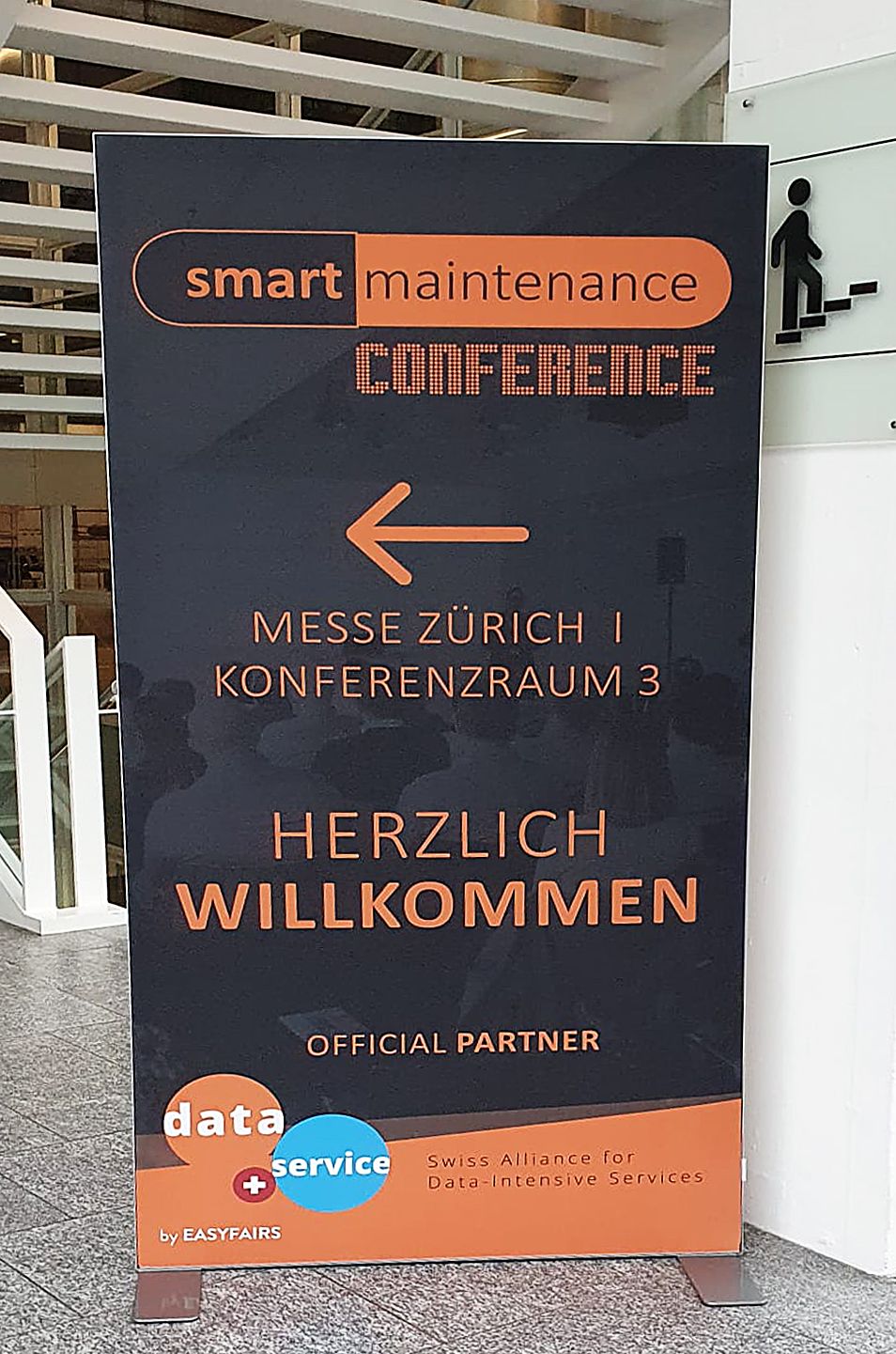
Smart Maintenance Conference at Messe Zürich

The conference focused on two themes: predictive maintenance & smart services. We gained insights on how to create and improve smart maintenance, and how valuable it can be to integrate different data sources in this process.
The switch to smart (micro) services is the new big thing and shows that Industry 4.0 is growing and maturing. Smart micro services provide people with tools to get their jobs done better, faster, with less errors and more efficiency – in many different industrial areas, be it national infrastructure, wind-made electricity or technical facility management. It’s all about data, and new technologies to transmit data will bring groundbreaking, applicable innovations.
At the conference the experts presented many practical examples of predictive maintenance, such as a smartphone-app which supports the technical facility management or smart services from the asset management perspective. Industry 4.0 is happening right now and it is already changing the ways we work and optimize our processes.
In addition to all the innovative projects, the focus during the conference has always been on connecting to the real life of individuals, how smart services can make it easier for them and how they can create real added value.
The speakers and their topics:

Dr. Lilach Goren Huber from the ZHAW School of Engineering discussed the notion of intelligent maintenance as an R&D process, needed for the implementation of data-driven algorithms for early fault detection, diagnosis and prognosis. Through a concrete use case of machine learning based fault detection and diagnosis in wind turbines, she explained what some of the typical challenges are that data scientists face on their way to develop intelligent maintenance algorithms, and how these can be overcome using novel methods in applied research.
It was exciting and refreshing to witness the curiosity and readiness of many of the participants towards implementing smart maintenance solutions in their companies.

Yvan Jacquat from GradeSens and Dr. Marc Tesch from LeanBI showed how Plug & Play applications in the area of condition monitoring and predictive maintenance already are possible today– with E2E solutions (from wireless sensors to data analysis) in sophisticated applications, such as robotic and wind turbines.
Nevertheless, some applications are still too complex for pure Plug & Play applications. Here, however, impressive use cases demonstrated that predictive maintenance can nevertheless create a high benefit. Such projects are also worthwhile and demonstrably successful. The journey towards complete Plug & Play continues.

Noser Engineering AG talked about the technical facility management, which they developed together with their partners from Nose Design AG and Sigren Engineering AG.

Severin Zahler, Software Engineer for Noser Engineering, has given a live demo with all the functions and advantages of the mobile application.

Dr. Shaun West from Hochschule Luzern held a presentation based on use cases that showed multi-actor or partner value creation. The CAT case based on a 2010 video of their platform, which helps worksite managers to operate and support maintenance.
Dr. West used a Vodafone/coffee use case to show how an OEM could support their dealers and restaurants with Industry 4.0-based services, a thought-provoking use case when designing Smart Services because of the way it focuses on the problems that individuals really have and where they need support.

Dr. Bernd Reimann from Hexagon elaborated on the “why? what? how? and whereto?” of some of the technologies developed and provided by Hexagon and its Innovation Hub that expedite digital transformation such as edge, connectivity, cloud, mobile, and AI.
Several real-world examples of this transformational journey have been presented, starting with R&D projects and leading towards smart services (and interesting findings on the way).

Reto Amstad from Siemens Digital Enterprise Services demonstrated individualized dashboards for different people to help them to get their jobs done in a very simple form. The approach of Siemens shows the integration of lean with digital in the Smart Factory environment.
By combining lean and digital, he showed how it is possible to improve productivity while reducing costs. The application of lean thinking (small agile projects) focused on actual problems and to build micro-services within a broader framework is highly effective. Siemens was using Mindscape in the use case example with integration into the MES; however, any Industry 4.0 platform would be able to support the analytics.
Many thanks to our members and experts for sharing their experience with the audience, especially ZHAW and HSLU for all scientific insights, Hexagon, Lean BI & GrandeSens, Noser Engineering and Siemens for the practical examples. And a big thank you to Easyfairs for making the Smart Maintenance Conference 2020 possible!